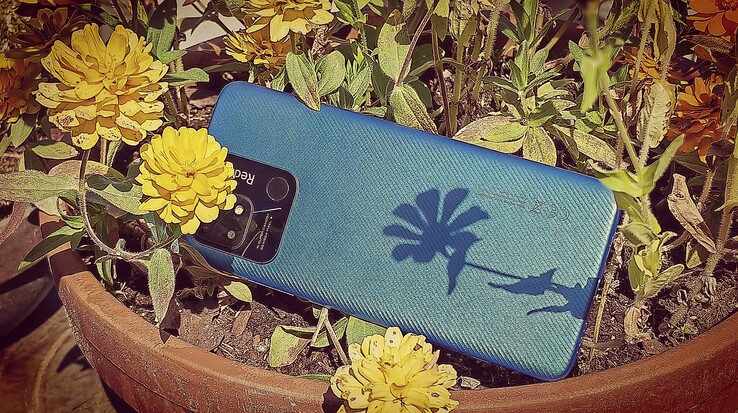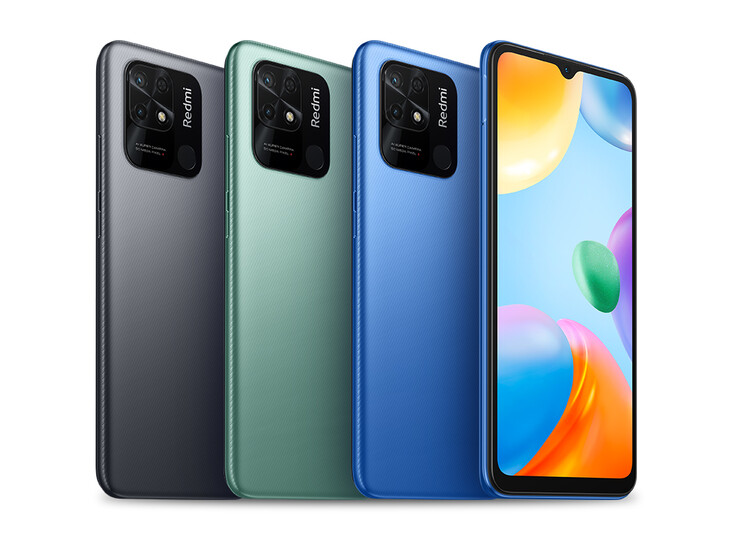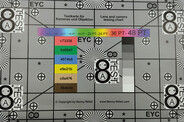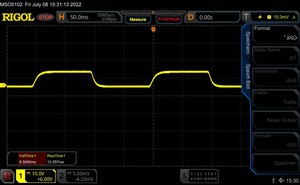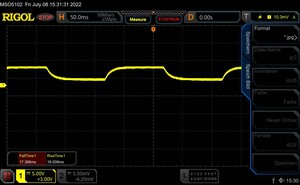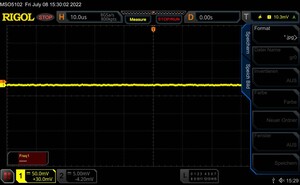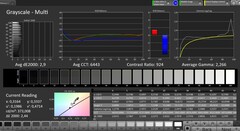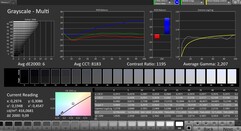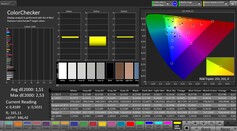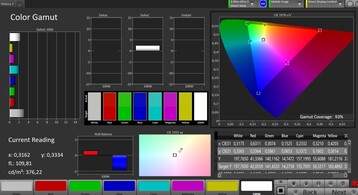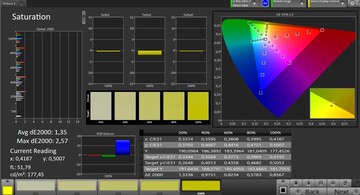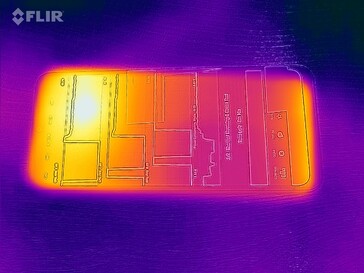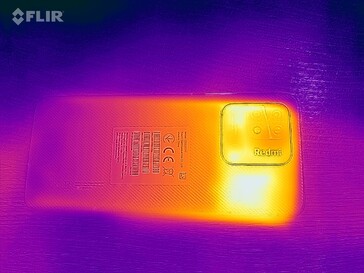小米红米10C智能手机评测--入门级手机的色彩还原度很高
潜在的竞争对手比较
Rating | Date | Model | Weight | Drive | Size | Resolution | Price |
|---|---|---|---|---|---|---|---|
| 76.6 % v7 (old) | 07 / 2022 | Xiaomi Redmi 10C SD 680, Adreno 610 | 190 g | 64 GB UFS 2.2 Flash | 6.71" | 1650x720 | |
| 75.1 % v7 (old) | 05 / 2022 | Motorola Moto G22 Helio G37, PowerVR GE8320 | 185 g | 64 GB eMMC Flash | 6.50" | 1600x720 | |
| 80 % v7 (old) | 05 / 2022 | Xiaomi Redmi Note 11 SD 680, Adreno 610 | 179 g | 64 GB UFS 2.2 Flash | 6.43" | 2400x1080 | |
| 75.8 % v7 (old) | 07 / 2022 | Samsung Galaxy M13 Exynos 850, Mali-G52 MP1 | 192 g | 64 GB eMMC Flash | 6.60" | 2408x1080 | |
| 73.8 % v7 (old) | 02 / 2022 | Xiaomi Redmi 9C Helio G35, PowerVR GE8320 | 196 g | 128 GB eMMC Flash | 6.53" | 1600x720 |
外壳和功能 - 受大猩猩玻璃保护
尽管红米10C目前几乎在所有地方都有折扣,但制造商的建议零售价如下。
- 64GB大容量存储/3GB内存:169.90欧元
- 64GB大容量存储/4GB内存:179.90欧元
- 128GB大容量存储/4GB内存:199.90欧元
在测试时,最大的版本只在网上零售商如amazon.de提供。,而64GB的版本也是直接从小米公司https://www.mi.com/de/product/redmi-10c/?skupanel=1.价格上的差异与Redmi Note 11同样的内存配置,价格相差20至30欧元。
红米10C采用塑料外壳,其笨重的相机模块也给人留下了相当深刻的印象,尽管这里有很多展示,因为小米红米10C实际上只包括一个摄像头。一个在触觉上也很明显的对角线图案贯穿了磨砂光泽的背面,它相当巧妙地隐藏了指纹,至少在我们的蓝色测试设备中是这样。其他颜色选择是绿色和灰色。
外壳建造得非常坚固,缝隙很小,大猩猩3号玻璃保护着屏幕。对外壳的压力只能部分地传到屏幕上,否则,智能手机看起来很耐看。
用于移动支付服务的NFC,以及蓝牙5.0都已安装。除了2张SIM卡之外,还可以使用microSD读卡器。在我们用参考的microSD Angelbird V60进行的测试中,该智能手机表现得相当好,对卡的读写速度非常快。
» Notebookcheck多媒体笔记本电脑Top 10排名
» Notebookcheck游戏笔记本电脑Top 10排名
» Notebookcheck低价办公/商务笔记本电脑Top 10排名
» Notebookcheck高端办公/商务笔记本电脑Top 10排名
» Notebookcheck工作站笔记本电脑Top 10排名
» Notebookcheck亚笔记本电脑Top 10排名
» Notebookcheck超级本产品Top 10排名
» Notebookcheck变形本产品Top 10排名
» Notebookcheck平板电脑Top 10排名
» Notebookcheck智能手机Top 10排名
» Notebookcheck评测过最出色的笔记本电脑屏幕
» Notebookcheck售价500欧元以下笔记本电脑Top 10排名
» Notebookcheck售价300欧元以下笔记本电脑Top 10排名
| SD Card Reader - average JPG Copy Test (av. of 3 runs) | |
| Xiaomi Redmi 10C (Angelbird V60) | |
| Average of class Smartphone (5.72 - 58.9, n=69, last 2 years) | |
| Samsung Galaxy M13 (Angelbird V60) | |
| Xiaomi Redmi Note 11 (Angelbird AV Pro V60) | |
| Motorola Moto G22 (Angelbird V60) | |
| Xiaomi Redmi 9C (Angelbird V60) | |
Cross Platform Disk Test (CPDT)
通信、软件和操作 - 更新至2025年
WiFi 5已经上马,这对这个价格范围来说是很平常的。与前代产品相比,红米10C现在在WLAN速度上有明显的优势,超过了红米9C,以及该价格范围内的其他设备,如 摩托G22,传输数据甚至更快一些。
可用的4G频率足以在欧洲国家旅行,但红米10C不能用于全球移动互联网。在我们的测试中,接收效果一般,不能总是跟上高端智能手机。5G通常只适用于MSRP超过200欧元(约200美元)的手机,所以红米10C也不得不没有它。
基于Android 11的MIUI 13已经预装在红米10C上。安全补丁是从2022年6月初开始的,因此仍然是相当最新的。 Android 12应该还是会在今年到来。将会有另一个Android 版本,每90天进行一次安全更新,直到2025年2月。
60赫兹的屏幕很容易使用,在角落里也很敏感。指纹传感器不同寻常地集成在相机模块中。左撇子用食指接触它比右撇子要困难一些。即使在待机状态下,扫描仪也能在短暂的等待后可靠地解锁智能手机。二维面部识别也可用于解锁。该软件解决方案在光线较弱的环境中也能很好地工作,但它可以被欺骗,从而使它不那么安全。
| Networking | |
| iperf3 transmit AX12 | |
| Xiaomi Redmi 9C | |
| iperf3 receive AX12 | |
| Xiaomi Redmi 9C | |
| iperf3 transmit AXE11000 | |
| Motorola Moto G22 | |
| Samsung Galaxy M13 | |
| Xiaomi Redmi Note 11 | |
| Xiaomi Redmi 10C | |
| iperf3 receive AXE11000 | |
| Motorola Moto G22 | |
| Samsung Galaxy M13 | |
| Xiaomi Redmi Note 11 | |
| Xiaomi Redmi 10C | |
照相机 - 只有一个可用的镜头
主摄像头的5000万像素传感器是三星的ISOCELL JN1,它也被用于 Redmi Note 11.红米10C没有广角摄像头,前代产品的微距镜头也被省略了。只有一个支持拍摄人像景深的镜头仍然可用。
红米10C的照片有点缺乏动态,所以明亮的地方很快就会过亮,而照片在恶劣的天气下看起来很暗。在非常低的光线下,红米10C确实能做到体面的增亮,但代价是严重的图像噪音。放大后的细节看起来相当粗糙。
视频最多能以1080p和30帧录制。亮度调节工作略微延迟,但总体上很好。自动对焦的效果也很好,但需要进行一些调整。
前置摄像头的分辨率为500万像素,拍摄的照片还不错,即使不放大也显得有点粗糙。你可以看到表面的细节有明显的颗粒感,在黑暗区域几乎看不到任何精细的结构。
Image comparison
Choose a scene and navigate within the first image. One click changes the position on touchscreens. One click on the zoomed-in image opens the original in a new window. The first image shows the scaled photograph of the test device.
Main cameraMain cameraLow Light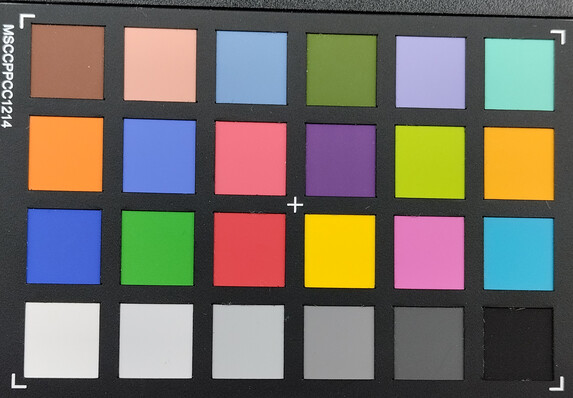
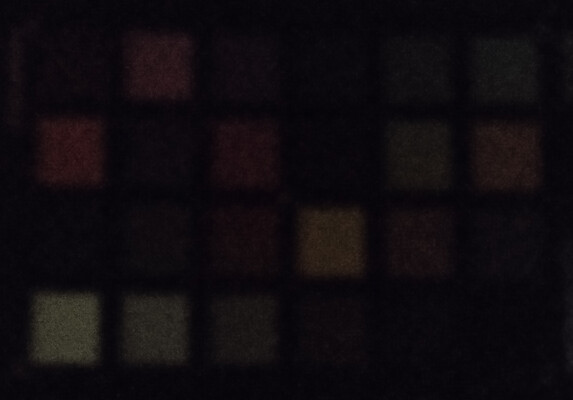
显示 - 只有720p和60 Hz,但没有PWM
IPS屏幕的分辨率为720p。多花一点钱,你可以得到 Redmi Note 11已经有一个1080p的OLED屏幕,而 Galaxy M13也能以更高的分辨率大放异彩,但它也依赖于LCD屏幕。
红米10C的屏幕亮度足以满足日常使用,当你选择 "标准 "作为配色方案时,你甚至可以在屏幕上获得非常准确的颜色。响应时间对游戏玩家来说会太长,但至少我们没有测量到任何PWM闪烁,这是一个问题,在 Redmi Note 11是存在的。
| |||||||||||||||||||||||||
Brightness Distribution: 84 %
Center on Battery: 511 cd/m²
Contrast: 1217:1 (Black: 0.42 cd/m²)
ΔE ColorChecker Calman: 1.51 | ∀{0.5-29.43 Ø4.78}
ΔE Greyscale Calman: 2.9 | ∀{0.09-98 Ø5}
93% sRGB (Calman 2D)
Gamma: 2.266
CCT: 6443 K
| Xiaomi Redmi 10C IPS, 1650x720, 6.7" | Motorola Moto G22 IPS LCD, 1600x720, 6.5" | Xiaomi Redmi Note 11 OLED, 2400x1080, 6.4" | Samsung Galaxy M13 PLS, 2408x1080, 6.6" | Xiaomi Redmi 9C IPS, 1600x720, 6.5" | |
|---|---|---|---|---|---|
| Response Times | -51% | 95% | 26% | -72% | |
| Response Time Grey 50% / Grey 80% * (ms) | 33 ? | 46 ? -39% | 1.135 ? 97% | 27 ? 18% | 60 ? -82% |
| Response Time Black / White * (ms) | 21 ? | 34 ? -62% | 1.635 ? 92% | 14 ? 33% | 34 ? -62% |
| PWM Frequency (Hz) | 171.4 | 17120 | |||
| Screen | -86% | 33% | -66% | -74% | |
| Brightness middle (cd/m²) | 511 | 451 -12% | 702 37% | 481 -6% | 467 -9% |
| Brightness (cd/m²) | 478 | 431 -10% | 701 47% | 444 -7% | 417 -13% |
| Brightness Distribution (%) | 84 | 90 7% | 98 17% | 85 1% | 83 -1% |
| Black Level * (cd/m²) | 0.42 | 0.5 -19% | 0.43 -2% | 0.53 -26% | |
| Contrast (:1) | 1217 | 902 -26% | 1119 -8% | 881 -28% | |
| Colorchecker dE 2000 * | 1.51 | 5.82 -285% | 1 34% | 4.55 -201% | 4.14 -174% |
| Colorchecker dE 2000 max. * | 2.53 | 9.3 -268% | 2.3 9% | 7.86 -211% | 8.49 -236% |
| Greyscale dE 2000 * | 2.9 | 5 -72% | 1.4 52% | 5.5 -90% | 6 -107% |
| Gamma | 2.266 97% | 2.776 79% | 2.2 100% | 2.233 99% | 2.291 96% |
| CCT | 6443 101% | 7683 85% | 6520 100% | 7969 82% | 7536 86% |
| Total Average (Program / Settings) | -69% /
-79% | 64% /
48% | -20% /
-47% | -73% /
-74% |
* ... smaller is better
Display Response Times
| ↔ Response Time Black to White | ||
|---|---|---|
| 21 ms ... rise ↗ and fall ↘ combined | ↗ 9 ms rise | |
| ↘ 12 ms fall | ||
| The screen shows good response rates in our tests, but may be too slow for competitive gamers. In comparison, all tested devices range from 0.1 (minimum) to 240 (maximum) ms. » 45 % of all devices are better. This means that the measured response time is similar to the average of all tested devices (20.2 ms). | ||
| ↔ Response Time 50% Grey to 80% Grey | ||
| 33 ms ... rise ↗ and fall ↘ combined | ↗ 17 ms rise | |
| ↘ 16 ms fall | ||
| The screen shows slow response rates in our tests and will be unsatisfactory for gamers. In comparison, all tested devices range from 0.165 (minimum) to 636 (maximum) ms. » 44 % of all devices are better. This means that the measured response time is similar to the average of all tested devices (31.6 ms). | ||
Screen Flickering / PWM (Pulse-Width Modulation)
| Screen flickering / PWM not detected | |||
In comparison: 53 % of all tested devices do not use PWM to dim the display. If PWM was detected, an average of 8108 (minimum: 5 - maximum: 343500) Hz was measured. | |||
性能、排放和电池寿命 - 充电器太弱
在性能方面,红米10C与它的前辈相比可以有很大的飞跃。一方面,这是由于更快的UFS 2.2内存,缩短了充电和等待时间,另一方面,该机的 骁龙680,为这个价格范围提供了良好的性能。由于显示屏的分辨率较低,在游戏方面甚至有优势,所以你能得到的帧数比在 Redmi Note 11中,它也配备了 骁龙680.
总的来说,你不应该期望在日常使用中出现奇迹,但它通常足以让系统平稳运行。然而,由于60赫兹的屏幕,你必须在操作的感知反应性方面做出一些让步。即使在连续负载的情况下,智能手机也几乎不发热。
底部边缘的小型单声道扬声器很难再现低中音,但即使在最大音量下,它在高音区也相当平衡,所以你绝对可以听音乐。有一个用于耳机的3.5毫米接口,以及蓝牙5.0,它可以使用各种编解码器,包括LHDC和aptX TWS+。
该智能手机可以处理18瓦的充电功率,但不幸的是,包装中只包括一个10瓦的充电器。这是小米的弱点,如果客户想在此基础上购买一个更快的充电器,可能会产生额外的电子垃圾。使用随附的充电器,充满5000毫安时的电池也需要远远超过2:30小时;使用更快的充电器,你可以将充电时间减少到2小时左右。
在电池充满的情况下,在手机不得不再次插电之前,可以在WLAN上冲浪约15小时。这是同类产品的典型值,与前代产品的水平非常相似。根据使用情况,2天不充电似乎是现实的。
| Xiaomi Redmi 10C | Motorola Moto G22 | Xiaomi Redmi Note 11 | Samsung Galaxy M13 | Xiaomi Redmi 9C | Average 64 GB UFS 2.2 Flash | Average of class Smartphone | |
|---|---|---|---|---|---|---|---|
| AndroBench 3-5 | -79% | 7% | -71% | -67% | -5% | 155% | |
| Sequential Read 256KB (MB/s) | 927.7 | 215.45 -77% | 895.34 -3% | 264.5 -71% | 263.1 -72% | 770 ? -17% | 2226 ? 140% |
| Sequential Write 256KB (MB/s) | 510.2 | 112.78 -78% | 519.23 2% | 193.5 -62% | 208.4 -59% | 399 ? -22% | 1848 ? 262% |
| Random Read 4KB (MB/s) | 120.2 | 39.32 -67% | 172.95 44% | 42.5 -65% | 54.5 -55% | 156.6 ? 30% | 295 ? 145% |
| Random Write 4KB (MB/s) | 195.2 | 16.34 -92% | 163.29 -16% | 30.3 -84% | 39.7 -80% | 177.7 ? -9% | 335 ? 72% |
温度
(+) The maximum temperature on the upper side is 37.7 °C / 100 F, compared to the average of 35.2 °C / 95 F, ranging from 21.9 to 247 °C for the class Smartphone.
(+) The bottom heats up to a maximum of 38.7 °C / 102 F, compared to the average of 34 °C / 93 F
(+) In idle usage, the average temperature for the upper side is 28.4 °C / 83 F, compared to the device average of 32.9 °C / 91 F.
演讲者
Xiaomi Redmi 10C audio analysis
(±) | speaker loudness is average but good (79.3 dB)
Bass 100 - 315 Hz
(-) | nearly no bass - on average 32% lower than median
(±) | linearity of bass is average (8.8% delta to prev. frequency)
Mids 400 - 2000 Hz
(±) | reduced mids - on average 5.1% lower than median
(+) | mids are linear (6.3% delta to prev. frequency)
Highs 2 - 16 kHz
(+) | balanced highs - only 2.4% away from median
(+) | highs are linear (5% delta to prev. frequency)
Overall 100 - 16.000 Hz
(±) | linearity of overall sound is average (23.9% difference to median)
Compared to same class
» 54% of all tested devices in this class were better, 9% similar, 37% worse
» The best had a delta of 11%, average was 35%, worst was 134%
Compared to all devices tested
» 71% of all tested devices were better, 7% similar, 23% worse
» The best had a delta of 4%, average was 24%, worst was 134%
Samsung Galaxy M13 audio analysis
(±) | speaker loudness is average but good (81.4 dB)
Bass 100 - 315 Hz
(-) | nearly no bass - on average 26.3% lower than median
(±) | linearity of bass is average (12% delta to prev. frequency)
Mids 400 - 2000 Hz
(±) | higher mids - on average 6.1% higher than median
(+) | mids are linear (6% delta to prev. frequency)
Highs 2 - 16 kHz
(±) | higher highs - on average 7.2% higher than median
(±) | linearity of highs is average (7.8% delta to prev. frequency)
Overall 100 - 16.000 Hz
(±) | linearity of overall sound is average (25.6% difference to median)
Compared to same class
» 63% of all tested devices in this class were better, 7% similar, 30% worse
» The best had a delta of 11%, average was 35%, worst was 134%
Compared to all devices tested
» 78% of all tested devices were better, 5% similar, 17% worse
» The best had a delta of 4%, average was 24%, worst was 134%
电池寿命
| Battery Runtime - WiFi Websurfing | |
| Average of class Smartphone (12.1 - 54.1, n=212, last 2 years) | |
| Motorola Moto G22 | |
| Xiaomi Redmi 10C | |
| Xiaomi Redmi 9C | |
| Samsung Galaxy M13 | |
| Xiaomi Redmi Note 11 | |
Pros
Cons
结论 - 节省设备
小米红米10C是一款低于200欧元(约200美元)的廉价智能手机,在同类产品中具有相当高的系统性能。电池的运行时间让我们信服。此外,即使在负载情况下,手机也几乎不发热,在正确的设置下可以在屏幕上显示相当准确的颜色。
令人讨厌的是,小米包括一个弱的充电器,预装了许多广告应用程序,并且只安装了60赫兹的面板。在这个价格范围内有更好的例子。
小米红米10C是一款适合预算买家的手机,功能有些简陋。然而,性能和电池寿命是令人信服的。
是的,与红米10C相比,你可以节省几欧元。 Redmi Note 11.但如果你不介意AMOLED屏幕的闪烁,你将得到一个广角摄像头,更高的显示分辨率,更快的帧速率,更快的充电,以及更快的Wi-Fi。
价格和可用性
在小米的网上商店你可以买到64GB版本的手机,在测试时的零售价上有20欧元的折扣,即分别约为150和160欧元。
在测试时,互联网上也有类似的优惠,例如,在我们的借阅处notebooksbilliger.de或amazon.de
带有128GB数据存储的变体可从不同的互联网零售商处获得,价格约为160欧元,例如,amazon.de.
Xiaomi Redmi 10C
- 07/21/2022 v7 (old)
Florian Schmitt




